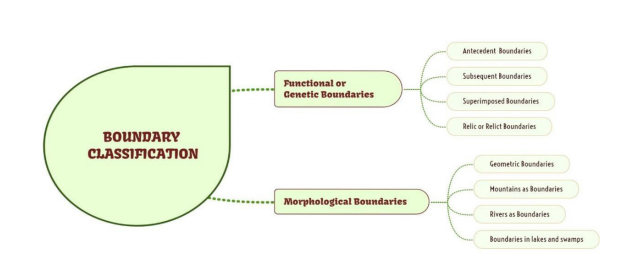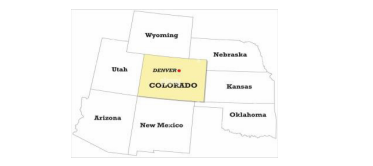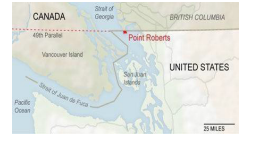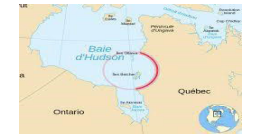
Geometrical boundaries refer to political divisions between states or territories that are defined by natural features or man-made structures with distinct geometric shapes. These boundaries are established based on lines of latitude and longitude, rivers, mountain ranges, or other identifiable geometric markers. Geometrical boundaries are often created without consideration for cultural or historical factors and can lead to both advantages and challenges for the entities involved. One classic example is the straight-line boundary between the United States and Canada, known as the 49th parallel. Another instance is the artificial division of the African continent during the colonial era, resulting in straight-line borders that often cut across ethnic and cultural regions. Understanding geometrical boundaries is crucial for comprehending geopolitical dynamics and the impact of border delineation on societies and nations.
Contents
Answer
Geometric Boundaries- Delimited by straight lines, follow precise geometric lines, often established without regard to natural or cultural features.

General Classification of Boundaries


Types of Geometric Boundaries
- Straight-line Boundaries
- Eg : Border between the United States of Colorado and Wyoming
- Boundaries along longitude and latitudes
- Eg : Border Between Usa and Canada along the 49th parallel

- Arc Boundaries
- Eg : The boundary between Ontario and Quebec in canada partially defined by James Bay which is an arc shaped feature.

- Meridian Boundaries
- Eg : Boundary between N. Korea and Russia is partially defined by the 42nd parallel north and 130th meridian East.

Geometrical Boundaries can Sometimes lead to boundary disputes and challenges when they do not align with natural or cultural divisions,having social and political implications.
In case you still have your doubts, contact us on 9811333901.
For UPSC Prelims Resources, Click here
For Daily Updates and Study Material:
Join our Telegram Channel – Edukemy for IAS
- 1. Learn through Videos – here
- 2. Be Exam Ready by Practicing Daily MCQs – here
- 3. Daily Newsletter – Get all your Current Affairs Covered – here
- 4. Mains Answer Writing Practice – here

